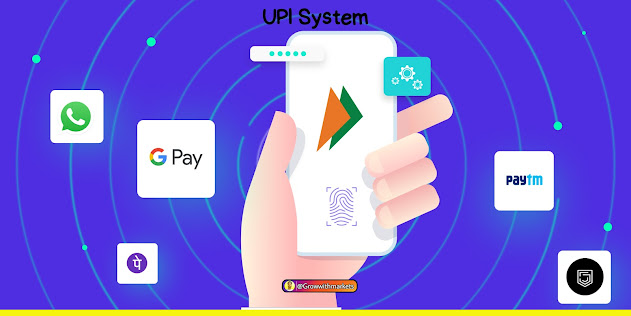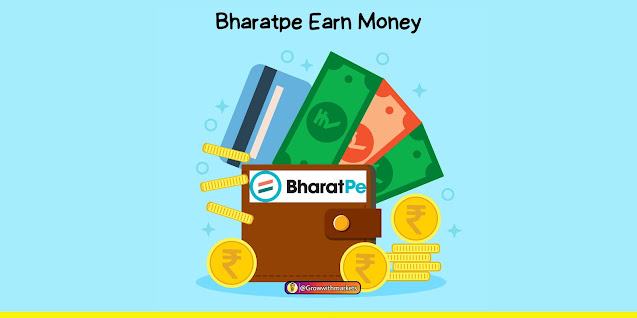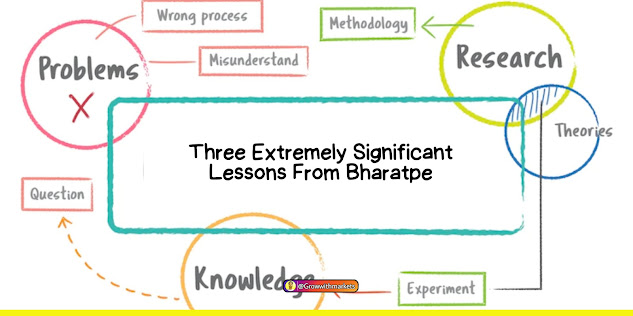Hey Friends, in the last five years, we've witnessed a dozen firms enter the Digital Payments Sector, and BharatPe, despite being a newcomer in the competitive wallet market, has stood out.
It has already attained a 2.8 billion dollar valuation within only three years since its inception and in this short period of time.
It already serves over 7.5 million merchants in 140 locations and promises to handle around 110 million UPI Transactions every month.
However, if you look at both sides of things, according to End Tracker, the company's operational revenue increased from 0 to 5.96 crores.
The Company's Losses increased by 839 percent, from 23 crores to 216.32 crores, and their cash burn for f521 is currently at 2.6 million dollars every month, which is close to 19 crore rupees per month.
Hidden Startup Secrets Of Bharatpe
So, Despite such frightening data, the issue remains. Why is BharatPe among the Top Five Fintech Startups In India?
What exactly is their Business Model? How can BharatPe become viable in the face of huge competitors such as Paytm, PhonePe, and Google Pay?
This is a tale that began in 2016, When India's payment renaissance began as a result of Demonetization.
QR Code
And we all watched as 86% of India's currency was declared invalid overnight. But, thanks to the internet and cell penetration, Paytm came to our rescue and enabled us to send money often to the tiniest seller using a QR Code.
As is customary in such a Large Unexplored Market, numerous other payment gateways began giving cashback in order to attract many of Merchants and customers at possible.
However, while most of us quickly adopted this digital payment method, a IIT Delhi Student Shashwad Nakhani found 3 Key Flows in the System.
1. Because each Payment App required a distinct QR Code when you went to a Kirana store to make the Payment.
It turned out that the store only accepted Paytm, If You Want To Learn More About How Does Paytm Makes Money Then Click Here Whereas we accepted Google Pay or PhonePe.
As a result, the Merchant would surely insist on Cash Payment, defeating the entire objective of being cashless.
Zero Percent Fees On Transactions
2. While payment applications charged zero percent fees on transactions for clients like you and me, no wallet took less than 1.5 percent in commissions.
As an example, if you buy goods costing 500 rupees, the vendor's profit is just 50 to 75 rupees.
In addition, 1.5 percent of the purchase price, or 7.5 rupees, was paid to Payment Gateways as commission.
And if you ask your local grocery store clerk, they'll remind you how bad their situation was back then.
UPI System
3. He became aware of the UPI System, which was basically free, and realized that there must be a method of leveraging UPI to eliminate All Payment Expenses.
This is when, ladies and gentlemen, on March 20, 2018, Mr. Nakrani and his Co-Founder, Mr. Ashneer Grover, started BharatPe with the goal of revolutionizing.
The payment systems in India, and the first thing they did was utilize ups star feature, interoperability. So, a single qr code was suddenly sufficient to transfer monies from your checking account to my bank account without the complications of a closed environment.
The nicest part about with this entire transaction was that it completely free for both retailers and Consumers like you and me.
Another advantage for merchants was that, whereas most Wallets and Payment Gateways had a minimum two-day settlement window, their money was reimbursed on the same day.
Bharatpe Earn Money
As a result, thousands more retailers quickly embraced Bharatpe. So the question is, How could Bharatpe generate money if the entire transaction was Free Of Charge?
This is where our shark, Mr. Ashneer Grover, comes in. Mr. Grover spent years working with American Express. He met and over 100 payment-related startups during the event.
This helped him grasp the Financial Market properly, and because he was the CFO of Growers, he knew the merchants' needs better than anybody else.
This event provided him with two crucial insights.
1. The retail sales margins were just too low to burn a hole in the merchants' pockets with commissions.
So, Commissions were not the best method to generate money.
2. He saw that, while shops would not pay for the service, they would gladly pay interest on loans.
Why? Because, despite the fact that micro, small, and medium-sized firms are an essential pillar of our economic growth, no Private Bank wants to give them money. Because of a lack of documentation or collateral.
It's understandable, because lending would still not make sense if there was no way to assess the risk of providing money to an individual.
So, despite the fact that all of these merchants had sound balance sheets and were seeing incremental growth, so few banks want to give them money.
In India, the unmet credit gap for Micro, Small, and Medium firms is 1 Trillion Dollars.
Merchant Lending System
This is why BharatPe passed up a wonderful opportunity to launch A Merchant lending system and instead joined the lending industry through partnerships with non-banking financial institutions.
This target sector comprised 65 million micro, small, and medium-sized enterprises (MSMEs) in India, which employ about 80 million people. Now, the concern here is, what if Banks really can not lend to small businesses? What was it about Bharatpe that allowed them to seize this amazing opportunity?
How do they hope to turn a profit? This is where the BharatPe Artificial Intelligence Algorithm comes in, and here's an oversimplified explanation. To comprehend, provide an explanation.
How does it work? Every time customers make a payment at a retailer using the QR Code, exactly like our Credit Card Companies, a spending pattern is created.
Bharatpe Algorithm
The BharatPe Algorithm monitors cash inflows at the merchant's end. Similarly, when a merchant uses BharatPe to pay for supplies, the algorithm keeps track of her monthly inventory value.
It also takes note of a spending behavior and numerous other characteristics in order to predict the expected savings income consistency of income, and so on.
So forth, and just as credit card firms examine your spending habits to determine your creditworthiness, the BharatPe algorithm analyzes this information to evaluate the risk of lending to a certain business.
Read More: Aman Gupta's Marketing Strategy That Make Boat No.1 || Boat Business Model
Without any documentation, the BharatPe Algorithm can determine a merchant's creditworthiness even if she is in a distant rural corner of the nation.
So, all of our kirana store's development is officially documented by the BharatPe Algorithm, and if enough data is collected, the computer will observe that Mrs. Sheetal has a healthy net inflow of 3 lakh rupees each month.
If she seeks a loan of 10,000 rupees, Bharatpe will instantly execute the transaction without any paper or collateral. Similarly, if Mr. Sunder has an inflow of 3 lakh rupees and requests a loan of 3 lakh rupees, Bharatpe will quickly process the loan without any paper or collateral.
Bharatpe may demand a greater rate of interest than Mrs. Sheetal, and once the lending process begins, the algorithm becomes increasingly adept at risk analysis based on the merchant's loan history and credit score.
This is how maharate now provides unsecured loans ranging from 10,000 to 7 lakh rupees for up to 12 months at a monthly interest rate of roughly 2%.
One of the most significant issues with lending is collection troubles and defaults, so even if a corporation wants to grow its lending operation across the country.
They require a massive crew for recuperation. However, according to BharatPe, the payback rate is 96.
Bharatpe is virtually an op Vasuli because it is among the best on the Market.
So, The Question is, How did BharatPe achieve such an Astonishing Feat?
Instead of asking the retailer to pay monthly payments, they may use their leverage with QR codes.
It deducts the money from the transactions before the bank settling for each day, such as if the merchant is required to pay back 15,000 rupees in installments every month.
He has a monthly input of 4.5 lakh rupees and a daily inflow of 15,000 rupees. Instead of requesting payment at the end of the month, the app rewards the merchant 15,000 rupees.
At the end of the day, it subtracts 500 rupees as a daily installment and then pays fourteen thousand five rupees to a Merchant.
This offers a win-win situation in which merchants really aren't burdened because they do not need to be reminded regarding payments and BharatPe can assure that its reimbursements occur without issue.
This is how businesses repay their debts in manageable daily payments as little as 430 rupees per day on average.
According to economic times, this is why BharatPehas an astounding payback percentage of 96, and guess what, as of October 2021, BharatPe has already facilitated loans to over 3 lakh merchants and issued over 2,800 crores in loans.
Bharatpe was generating loans worth 300 crores per month, and presently BharatPe Loans are available in over 11,000 pin codes across 24 states, with a sales team of 4,000 agents educating merchants on various financial products.
They have an unbelievable retention rate, with 45 percent their merchants taking repeat loans, and all of this is done digitally, without any bother and, most crucially, without any collateral.
As a result, more retailers equals more data. More data processing results in more accurate risk assessment. Less bad debt implies better risk assessment.
That equals outrageous profits. This is why Bharatpe spends 2.5 million dollars every month on bringing on as much merchants as possible.
That's how BharatPe is leveraging its mad ai algorithm to solve a critical problem for India's msmes.
As a consequence, they had a tenfold increase in the previous fiscal year, and Bharatpe now plans to issue $1 billion in loans to merchants.
This takes me to the most crucial section of the episode: considering the idea that Bharatpe may be considering an IPO shortly.
Three Extremely Significant Lessons From Bharatpe
What are the elements to consider before deciding whether or not to invest in BharatPe? If you're eager to learn about such business stories.
1. You should study the 12% club, a BharatPe Peer-to-Peer Lending Business.
For those who are unfamiliar, peer to peer lending is a simple idea in which you deposit money with BharatPe.
Bharatpe utilizes the funds to lend to creditworthy persons and repays you with interest, thus benefiting all players in the cycle.
2. Research the BharatPe-Centrum Group Cooperation. They are asking for a banking license and appear to be competing in the payment gateway industry alongside Paytm, Phonepe, and Google Pay.
A Banking License is a significant barrier to entry for this, and I am still trying to understand how and why, so if any of you happen to be a Specialist in this sector, do leave a remark.
3. Now that you recognize the power of these payment gateways & how they may use data to become loan behemoths. Apart from that, given the recent controversy surrounding Bharatpe and Ashneer Grover.
Remember, regardless of what happens to BharatPe as a firm, your role is to stay out of the issue.
However, to comprehend the potential that Bharatpe has seen and the fact that it has developed a business strategy to meet a one trillion dollar credit deficit.
So, if BharatPe does not do it, someone else will, and the market is so large that we need ten more competitors to address this problem, so concentrate on the strategy rather than the debate because that is what will benefit you as an investment.
So, This Is The Bharatpe Business Model Also You Must Subscribe Our Blog For Upcoming Bharatpe Marketing Strategy In Our Blog.
Read More: Aman Gupta's Marketing Strategy That Make Boat No.1 || Boat Business Model
Well, if you like this post then Subscribe Our Growwithmarkets Youtube Channel for latest videos/posts Here Is Some Latest Videos, thankuuu.....













0 Comments